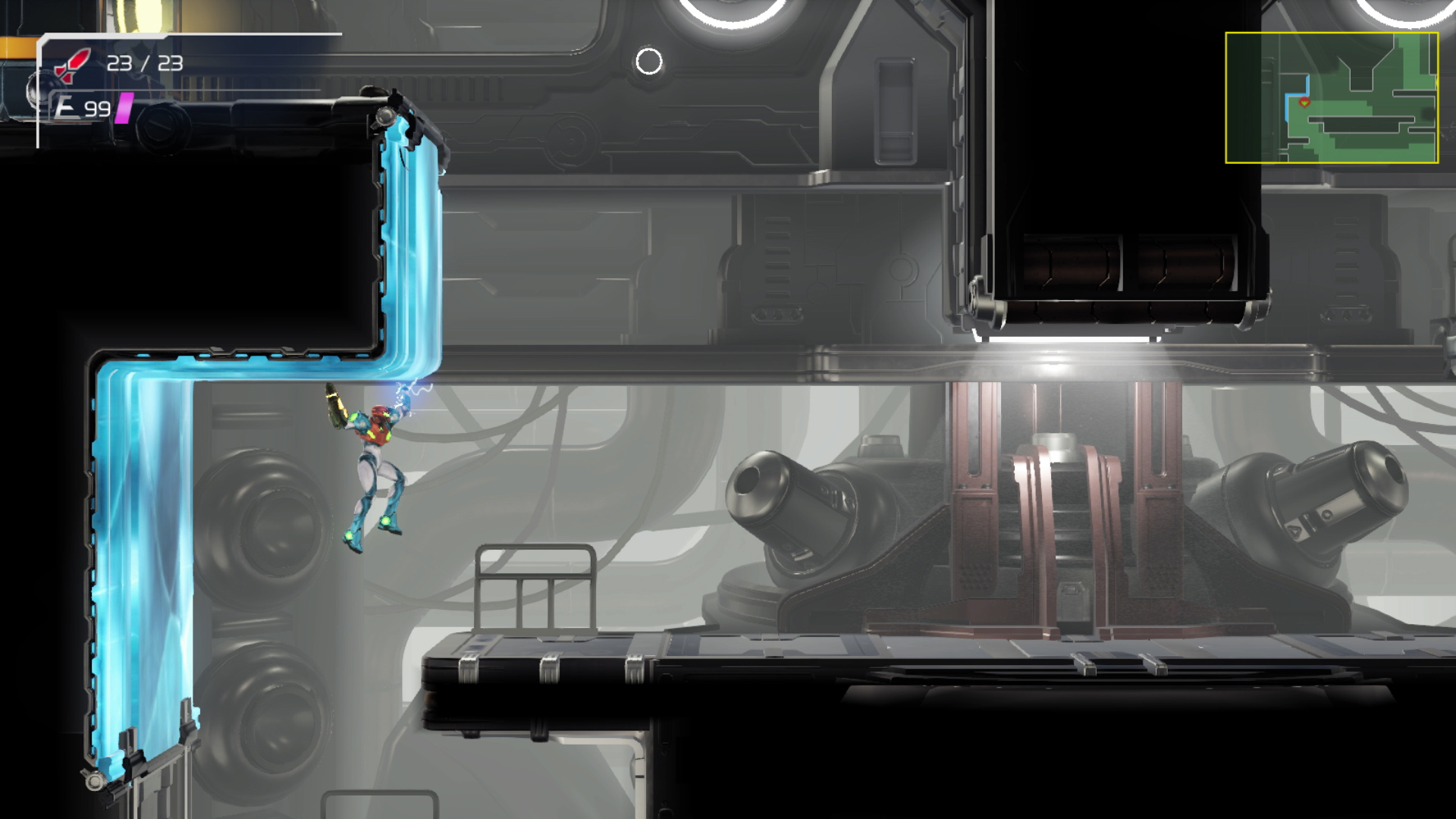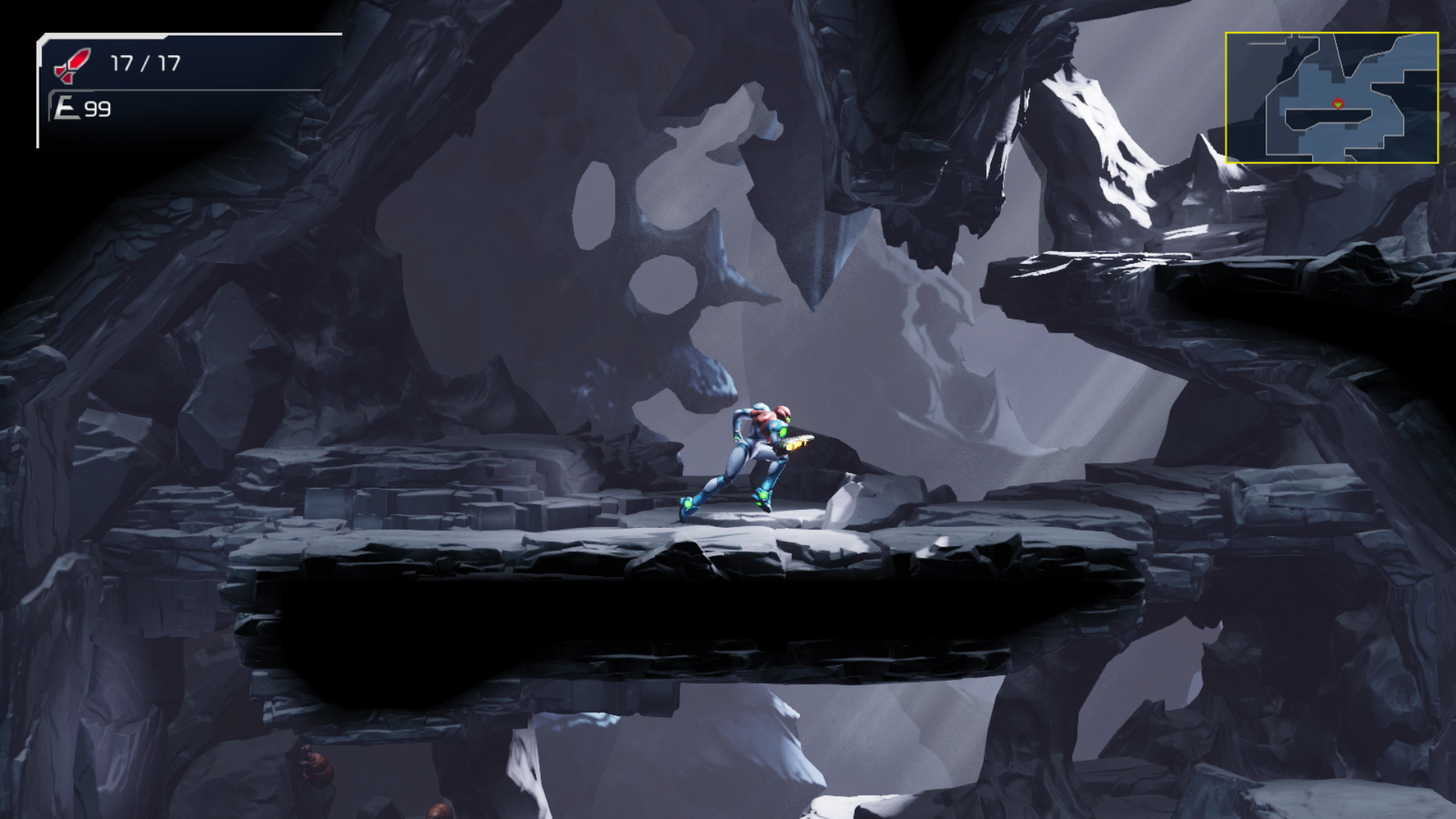GamesRadar+ Verdict
Frustrating boss battles and cumbersome controls distract from an otherwise fun and isolating adventure
Pros
- +
+ Solid structure
- +
+ Exploration is fun
- +
+ Isolating game world
Cons
- -
Flat visual design
- -
Frustrating boss battles
- -
Hand-cramping controls
Why you can trust GamesRadar+
Samus Aran is lost and afraid. Then again, maybe I'm projecting here – 13 hours with Metroid Dread can have that effect. Because after 35 years of hunting bounties across the galaxy, I can't imagine that Samus would be afraid of anything that ZDR has to throw at her, not after surviving the horrors of planet Zebes in Super Metroid and the BSL Station orbiting SR388 in Metroid Fusion. And Samus doesn't get lost, she knows that every step taken will bring her ever closer to reaching her next unknowable, intended destination. We've taken all of these adventures together over the years, but here I am all the same, spending much of this new adventure lost and afraid.
Lost in the labyrinthian corridors of ZDR, trying to discern the location of breakable blocks or traversable paths within Metroid Dread's muted, visually-uninteresting environments. And I'm definitely afraid, terrified of encountering another hanging area-transition screen – a signal that I'm about to be confronted with yet another dismal boss battle or unwieldy E.M.M.I. encounter. Metroid Dread is built upon refined and established foundations, but there's something about the execution of this long-awaited sequel that left me feeling a little cold.
Fight to survive


Release Date: October 8, 2021
Platform(s): Nintendo Switch
Developer: MercurySteam, Nintendo EPD
Publisher: Nintendo
There's a fine line between fun and frustration in boss battles. Co-developers MercurySteam and Nintendo EPD demonstrate how difficult it can be to walk that line, with Metroid's first original 2D side-scrolling adventure in 19 years frequently stumbling over it. There's a confluence of issues at play here, each working to ensure that Metroid Dread's numerous boss fights and E.M.M.I. encounters slowly pick at your patience. Your investment in getting Samus back in her fully-powered suit and off of Planet ZDR alive waning with each battle.
The boss fights are poorly patterned and can be weirdly inconsistent. They will force you to navigate cramped environments, push through the occasional bout of frame-rate slowdown, and reconcile with Metroid Dread's hand-cramping controls – so overburdened is this game with inputs. Difficulty spikes in Metroid are to be expected, but there's something routinely off here about the encounters. That's in part, at least, to a couple of returning features from MercurySteam's 2017 remake of Metroid 2: Return of Samus.
We're once again granted free-aim control over Samus' Arm Cannon, designed to let you dial-in precision beam shots and missiles at encroaching enemies. While the system is improved over its introduction in Metroid: Samus Returns – as you'd expect, given the comfortability of the Joy-Con thumbstick versus the 3DS' Circle Pad – I found wielding free-aim to be a little sticky.
That isn't all that much of a problem in the overworld, where ammunition is plentiful and enemies are largely unchallenging, ensuring that a few missed hits don't create all that much of an issue. But in the boss rooms, wrestling with free-aim can be the difference between reaching the next tightly-windowed QTE or Samus hurtling back to a checkpoint in an adjacent screen.

The Melee Counter was a divisive introduction in 2017, bringing melee combat into encounters that had historically been fought at range. The system feels as similarly stretched in Metroid Dread as it did in Samus Returns. Melee Counter removes much of the momentum from exploration and can slow combat to a crawl. The system feels cumbersome and, inside of boss rooms, its inconsistency is laid bare, where the rules on what can and can not be parried border on nonsensical.
Eventually, you'll long to see the small glint of yellow pop up above an enemy's shoulder, indicating an incoming attack can be parried. Typically, that's the one and only signal that you've pumped enough missiles into a foe to trigger a cinematic cut-scene and push into the next phase of combat.
Boss battles shine a light on Metroid Dread's biggest problems. There's an overcomplication of Metroid's well-honed systems of progression, traversal, and combat here. Truth be told, the GBA and SNES offered a finer degree of control with far fewer available inputs and were all the more enjoyable because of it. Whether you're trying to trigger a parry against a room-sized boss, running for your life from a robotic E.M.M.I. that wields a one-hit kill mechanic, or otherwise struggling with the controls to unleash defensive Screw Attacks and Missile salvos, it's hard not to wonder why the Dread's action leanings ended up this way.
Embracing isolation

Heading in, there was a question of how Metroid Dread would be positioned. Would Nintendo reconcile with the fact that the style Super Metroid pioneered has ultimately been advanced by the games it inspired – the likes of Axiom Verge and Ori and the Blind Forest. Or would it pick up where Metroid Fusion left off in 2002, furthering a commitment to (frustratingly) guided-play in a hostile alien world. The truth is, Metroid Dread does neither. What you have here is an experience that works to combine the structured storytelling of Fusion, the pervading sense of solitary isolation that helped to define Super, and the overly complicated combat mechanics of Samus Returns.
When Metroid Dread hits its stride, it's easy to appreciate what MercurySteam and Nintendo were shooting for here. Dread captures a sense of uncertainty through its world structure and sound design that can easily enrapture your attention for hours on end. The series' ever-distinctive game flow easily willing you further into a world that will frequently feel both insurmountable and irresistible.
Adam returns from Fusion, but its presence is far less intrusive. Rather than dictating your every move and action, the artificial intelligence is here to merely drop lines of lore (useful, given that Dread does a terrible job of outlining the broad strokes of an overarching story that can't be played in its entirety on any single platform), occasionally remind you of an objective, and hammer home the idea that you're woefully underpowered to face the threats lurking in each of the eight core biomes. Old habits die hard, I guess.
The point of the Metroid games has always been to get lost. That's a factor that Metroid Dread keenly understands and delivers on. Once the story hits its stride, letting you free enough to hunt for upgrades to your arsenal and fight for inches of progression across each of the various world spaces, you'll long for more of Metroid's solitary confinement.

Combat is easy-going out in the overworlds of planet ZDR, but your exploration will be frequently interrupted by an enemy demanding to be parried, or sections that force slow, stealthy traversal – spaces to be navigated by utilizing returning Aeion abilities such as Phantom Cloak and Flash Shift. Eventually, you'll come to view these elements and areas for what they are: disruptions. Distractions from exploration, unnecessary attempts to divert your attention away from the areas in which Metroid has its surest footing.
It's worth mentioning that, as good as that sense of isolation feels throughout Dread, it can get on top of you in the opening hours. I don't think that's because of the way it communicates progression, but rather a reflection of the rather uninteresting art direction. The 2D Metroid games have always had such a distinct, otherworldly vibrancy to their visual design. So it's disappointing to see Metroid Dread land with such a sterile, clinical visual theme; your mileage may vary here, but I found it challenging to pick out what should have been obvious routes forward in the environments as everything sort of blurred together, particularly before I was able to get my hands on items that really opened exploration up like the Morph Ball, Bombs, or Grapple Beam.
Metroid Dread's often idiosyncratic approach to combat and control has a wide-reaching impact on what this 2D adventure can ultimately achieve. There's a great game buried in here, but you'll need to constantly push through some frustrating encounters and points of friction to find it. This isn't the return Metroid deserved after Fusion, but after 19 years perhaps it's no surprise that Samus Aran is a little off her game.
Metroid Dread was reviewed on Switch OLED, code provided by publisher.

Josh West is the Editor-in-Chief of GamesRadar+. He has over 15 years experience in online and print journalism, and holds a BA (Hons) in Journalism and Feature Writing. Prior to starting his current position, Josh has served as GR+'s Features Editor and Deputy Editor of games™ magazine, and has freelanced for numerous publications including 3D Artist, Edge magazine, iCreate, Metal Hammer, Play, Retro Gamer, and SFX. Additionally, he has appeared on the BBC and ITV to provide expert comment, written for Scholastic books, edited a book for Hachette, and worked as the Assistant Producer of the Future Games Show. In his spare time, Josh likes to play bass guitar and video games. Years ago, he was in a few movies and TV shows that you've definitely seen but will never be able to spot him in.



